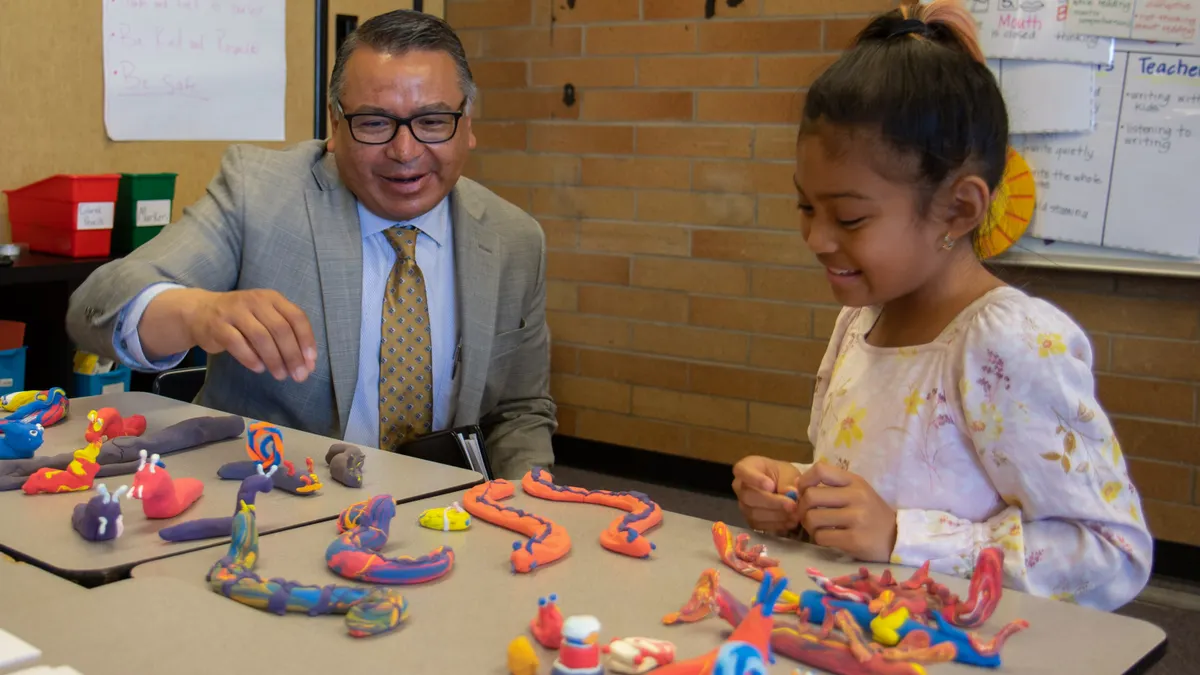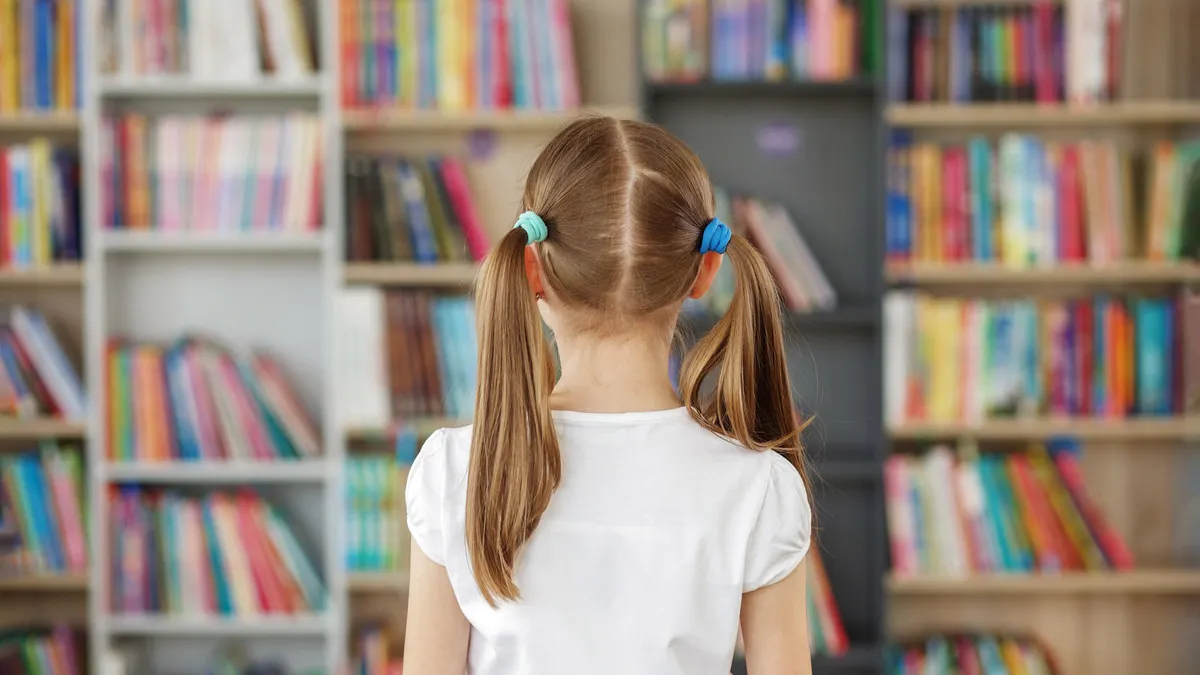Many a seasoned educator can tell you that getting students' attention is easier said than done, and maintaining that engagement can sometimes prove even more difficult.
To gain insight on what works best, we asked six current and former school and district leaders to share their favorite tactics and strategies, and this is what they had to say.
Glenn Robbins - Superintendent of Tabernacle School District in Tabernacle, NJ
“Hands down, embracing the design thinking process from Stanford University d.school has completely propelled our PreK-8 district to exponential levels. Anyone can work on basic project-based learning, but when empathy and human-centered provocations are placed into the hands of our students, they are empowered to better the lives of others. You see unlimited creativity with no fear of failing, and a desire unlike any other knowing that they can make a positive difference in someone’s life. Our students, regardless of levels, feel fully empowered by our staff, as they feel the trust and respect when asked 'how might we, what if, and yes, and' because our staff allows the students to implement their ideas. Egos are removed, and everyone plays a key role in making it 'OUR TigerStrong' school.”
Susan Kessler - Executive Principal at Hunters Lane High School in Nashville, TN
"Students are most engaged when their learning is authentic and relevant. The idea of 'just in time' learning is one of the strategies that high-performing teachers utilize so well. For example, regardless of when the curriculum says we should teach about the freezing temperature of water, 'just in time' learning means that we use the first threat of snow each winter as an opportunity to get students interested in weather patterns and predictions. The possibility of a 'snow day' is a relevant, authentic experience for children."
"Of course not every curriculum topic has a hook like the snow day example, but when we approach teaching about our world through the perspective of the student, we are often able to determine far more meaningful ways to get students to interact with the curriculum than teaching facts in isolation. If a student is interested in what we are teaching about, learning is a natural outcome rather than a forced one."
Richard Gordon IV - Principal of Paul Robeson High School in Philadelphia, PA
"I can't understate or even overstate the power of relationships with our students and with our families. That's what's been working here. My students feel as if they can come to us as a staff. But also at the same time, you have access to the principal whenever you want to — not just during the hours of 7:00 to 4:00 during the course of the day. For a lot of our students, unfortunately, situations and trauma happen all the time. A lot of the kids have my personal cell number, as they do with some of their teachers as well, and they call me up."
"I had a young lady who called me from college, freaking out. She literally got there on a Friday, and on Monday she was freaking out because she was homesick after the first three days. She was ready to pack up and leave and drop out of college right then and there. She called me at 1 o'clock in the morning, and after she called me, I called a friend of mine who she reminded me of. I called my friend down in North Carolina and woke her up, and we had a three-way conversation going on on the phone, 'til about 2:30 in the morning. It calmed her down. I took my children with me to campus to go see her, and she has a 3.5 average so far on her progress report from college, she's joined multiple clubs, she has two close friends on campus. She's fine."
"It's that engagement that keeps kids wanting to come to school. They feel a part of what's going on. They feel important here. They feel safe. They feel nurtured. They feel they're participating in something greater than themselves. I often tell them that Robeson has to stand for something bigger than all of us. It can't be something that only means something to me. It has to be something that stands for all of us. We do all those things to really engage our kids and show them the importance of being part of this thing and that it doesn't stop when you graduate."
Eric Sheninger - Senior Fellow and Thought Leader on Digital Leadership with the International Center for Leadership in Education (ICLE), Former Principal of New Milford High School in New Milford, NJ
"For students to be engaged, learning has to be a personal experience. They crave to understand the 'why' behind what they are learning and then how they will be able to apply what has been learned in the real world. If we want students to think critically and solve problems then relevance, value, and meaning are essential elements that have to be included to maintain attention. In the end, engagement is great but it has to lead to evidence of learning."
Patricia Dunn - Assistant Superintendent of Schools at Garnett Valley School District in Glen Mills, PA
"I think that it has to be relevant to them. It has to excite them. I had just come downstairs from a classroom, and in this particular classroom, an 8th grade classroom from our middle school had come over to work with our 3rd grade students. They had to develop a lesson for our 3rd grade students, and it was very interesting to see. It had to have a 'before, during and after.' They had to use the same strategies that the teacher had been using with them. You saw two classes together in this classroom, and every student was engaged because it was relevant to them. The 8th grade students were so proud that they had developed this lesson."
"It took a lot of time and work for them to be able to design a lesson that was interesting and also had a skill attached to it that the 3rd graders could learn. It really gave them some leadership opportunity. It needs to be relevant, it needs to be personalized, but they also need to develop some leadership skills, because when that happens, they feel empowered to be able to continue to be the best learner they can."
Scott Baytosh - Head of School, Alexandria Country Day School in Alexandria, VA
"If students are not engaged, learning is not effective. I think what is most important in fostering high levels of student engagement is offering students work that is authentic and meaningful to them. This doesn't mean we can only teach what kids are already interested in; rather, it means that we must be able to find a relevant and honest connection to their experience as learning and growing young people. Children are hardwired to learn, and anyone who has seen a child immerse themselves in a favorite topic (be it Pokemon, baseball, or horses) knows that they have an enormous capacity to build knowledge and skill."
"Oftentimes, instruction is structured with the intent of getting students to arrive at our predetermined conclusions. Students are savvy to this and tend to disengage ('If you know, than why are you asking?'). But if you ask them to grapple with open-ended problems, meaty philosophical or ethical questions (even at a young age), compelling ideas, or complex problems that have real-world application, we invite students more fully into the learning process. Additionally, factors such as the energy and enthusiasm of the teacher, the pacing of the class, the amount of physical engagement, and the degree to which we invite kids to engage with one another all contribute to higher levels of engagement."
"We have also found that robust attention to social-emotional learning enhances engagement. At Alexandria Country Day School, for example, we discuss the traits of successful learners, promote a growth mindset, and work to mitigate factors that inhibit learning, like anxiety, peer pressure, and an overly intense focus on grades. Students are more likely to be engaged when they understand that they are known and respected by their teachers and peers, can be themselves, and can explore ideas and take risks with confidence."
"At ACDS, we have undertaken a video-based professional development project focused on student engagement, in which teachers video record their instruction and then use an online video archiving system to store, share and comment on one another's videos. Their primary focus in this effort is evaluating and strengthening instructional strategies that promote higher levels of student engagement. In most cases the camera is trained on the students as much as the teachers, so that we can measure their engagement, noting when students tune out, get fidgety, or, conversely, lean in, ask questions, and comment thoughtfully."







 Dive Awards
Dive Awards











